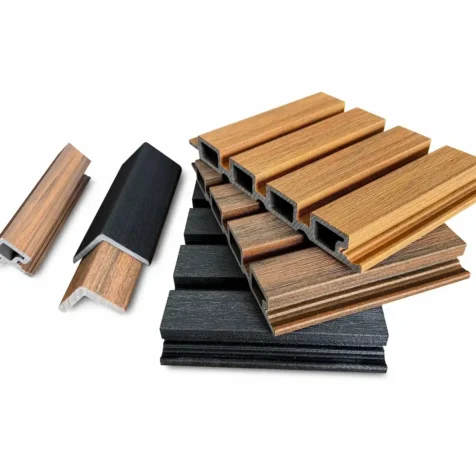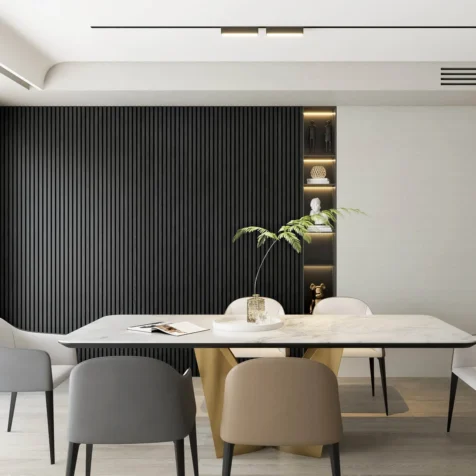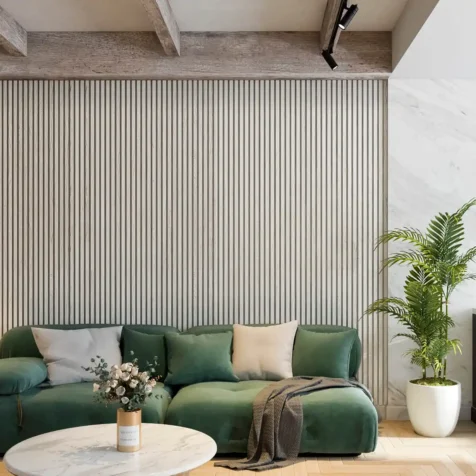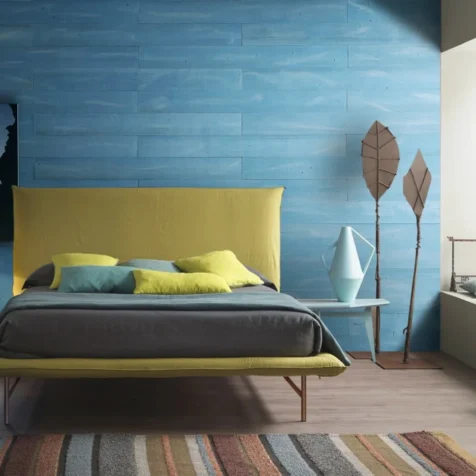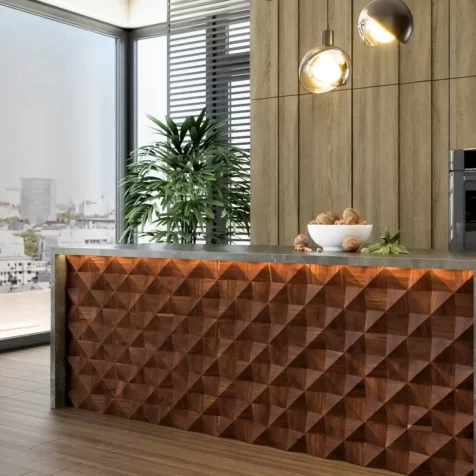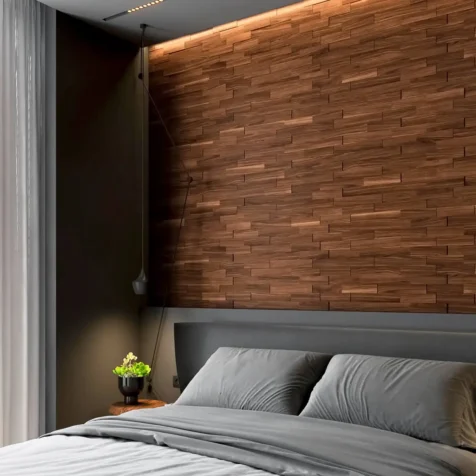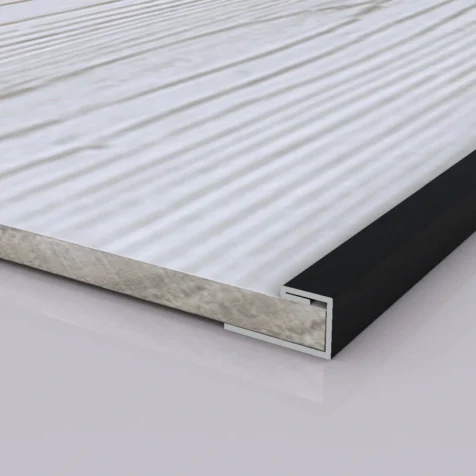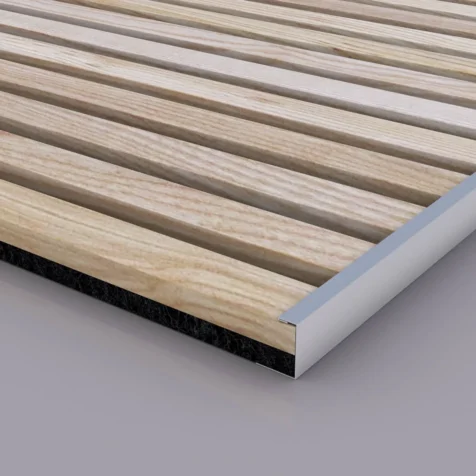Wainscoting Dos and Don’ts: Tips for Stylish and Functional Walls
Wainscoting is a favorite traditional wall treatment used by many house owners. People usually install paneling along the lower portion of a wall for better wall protection. Nowadays, it’s also used as a design element to add architectural character and enhance aesthetic appeal.
Knowing wainscoting dos and don’ts will help you incorporate it into your home properly and extend its longevity. Follow for more details!
What is Wainscoting?
Wainscoting is a decorative paneling type that provides appealing visuals to the space. Its common materials include wood, MDF, and PVC. This decoration can extend from baseboards or across a wall.
Wainscoting was originally used as insulation. Nowadays, many homeowners prefer it as a home renovation feature to enhance their interior design.
Wainscoting comes in various designs, including beadboard, raised panel, flat panel, etc. Each offers a distinctive visual, giving users multiple choices.
Now, let’s dig into the wainscoting dos and don’ts!
The Dos of Wainscoting
- Do Measure and Plan Carefully
The first thing you should do if you want a perfect wainscoting wall is to measure carefully. Measure the wall precisely to determine if it is 32 or 36 inches high (like the height of most wainscoting).
Once you finish measuring properly, multiply the linear footage by 2.66 for 32-inch wainscoting or 3 for 36-inch wainscoting. Then, you can identify how many square feet of wainscoting are required to finish the project.
- Do Choose the Right Style for Your Space
Think of the space where you want the wainscoting to be installed. Question yourself about what style you pursue. If you can’t decide, you can consult with WoodyWalls. We can help you figure out your best option.
- Do Use Quality Materials
The next thing to consider when choosing wainscoting is the material’s quality. Remember that real wood panels are usually more pricey. However, you can also opt for budget options (without sacrificing beauty and functionality), such as MDF board or vinyl alternatives.
- Do Prep Your Walls
Don’t forget to prepare your wall before installing! There are many things to do, such as removing baseboards, vanities, switches, and outlet plates.
If the walls have a thick texture that makes it impossible to place boards, clean them and sand them off.
- Do Consider Paint or Finish
If you decide to paint or stain wainscoting, it should be done before attaching to the wall to facilitate handling and avoid paint damage. To prevent brush strokes on the panels, consider painting using a paint sprayer.
After installing, it’s better to touch up the finish or paint to avoid scratches or chips. This guarantees a polished look and keeps the wainscoting from looking cracked or damaged during installation.

The Don’ts of Wainscoting
- Don’t Ignore Room Proportions
Since wainscoting can change the room’s visual proportions, you should think about it thoroughly before choosing the panel’s height. Tall wainscoting is not suitable for smaller rooms as it can be overwhelming. Meanwhile, shorter wainscoting in bigger rooms can create an imbalance and inappropriate look.
⅓ of the wall’s height is ideal. It’s the rule of thumb to follow if you want to achieve a harmonious look. Wainscoting covering ⅓ of the wall’s height is the most suitable solution for most room sizes and ceiling heights.
In short, don’t miss considering the height of the walls, the room’s size, and the furniture to avoid making the space off-balance.
- Don’t Install Wainscoting in High Moisture Areas Without Proper Prep
High-humidity zones, such as basements or bathrooms, should be well-prepared. Otherwise, wainscoting can be damaged by excess moisture in these areas.
Ensure you make proper preparations before installing wainscoting in these spaces. A waterproof backing vapor barrier might be needed to protect it from moisture damage, mold growth, and warping.
You also need to choose moisture-resistant materials, like MDF or solid surfacing. Therefore, the wainscoting lasts and performs well in damp environments.
- Don’t Overcomplicate the Design
The design should not be overcomplicated. Detailed paneling may draw attention, yet it is not easy to fit all styles. It also can make the room look cluttered, especially in smaller spaces.
You’d better go for simple patterns for a more timeless and versatile look. It blends well with a variety of decor styles and provides long-lasting appeal. Furthermore, if you want or need to make any room change in the future, a simple style can easily match it.
- Don’t Skimp on Adhesive or Fasteners
You should use a proper amount of adhesive or fasteners to ensure that the wainscoting is securely attached to the walls. Skimping on them may lead to warping or becoming loose over time.
Choose the high-quality one and support the wainscoting with screws or nails to ensure a firm grip if necessary.
- Don’t Forget Maintenance
You should not leave wainscoting untouched for a long time. You should often check for loose panels or damage and address it promptly to avoid a shortened product’s life span. Regular maintenance can refresh wainscoting and make it more durable.
Choosing the Right Height for Wainscoting
In general, the cap stays ⅓ of the way up the wall. For example, you should use 3-foot wainscoting if the ceiling is 9 feet high. Cap the wainscoting two-thirds of the way up the wall if it is taller, such as wainscoting with a plate rail.
It’s also important to consider the room size for wainscoting installation. ⅓ height is ideal for small rooms. Meanwhile, you’d better increase it to ½ or ⅔ for a balanced proportion.
The height for wainscoting also depends on your preferred style. If your room is traditional, go for shorter panels. On the other hand, higher wainscoting will suit modern spaces better.
Where To Use Wainscoting
Wainscoting adds style to different spaces in your house. At the same time, it protects walls from deterioration. It’s a durable and flexible solution that works well in any setting. The following places are suitable for wainscoting installation:
1. Entryways
Paneled wainscoting is frequently used in formal foyers due to its durability. It’s especially suitable for high-traffic areas. If you need an elegant, timeless look to impress your guesses, it’s an ideal option.
Meanwhile, beadboard is a good option for mudroom walls since it has less noticeable borders. Thus, you can pursue a more casual and approachable aesthetic that is easy to maintain. The option features simple and clean lines, making it a practical choice for spaces where dirt and wear are common.
2. Stairs and Hallways
Wainscoting not only protects the walls of these narrow passageways from scuffs and marks but also contributes to the overall design of these spaces.

The horizontal rails of the shiplap often follow the stair pitch, making them ideal for this area. It creates a visual flow and emphasizes the architectural lines.
Besides, wainscoting features sound-absorbent properties. So, using it can make the hallways less echoey and more inviting.
3. Eating Areas
Wainscoting can be combined with grooved plate rails so that fine china and other items can be highlighted. No matter the style of your dining room, you can find a suitable match.
The classic look of wainscoting paired with plate rails adds a touch of sophistication to dining spaces. Besides its decorative effect, it also protects the wall from stains and spills that can appear during meals.
4. Family Rooms and Dens
Wainscoting in family rooms and recreation rooms may improve the experience by offering a broad cap rail for pool-cue chalk, ping-pong paddles, or refreshments.
Wainscoting can provide a good balance for your room’s proportions. It especially works well with larger spaces, creating a balanced and cozy space. It’s also a protective tool for the room against daily wear and tear.
5. Baths
Wainscoting, which can be built of warp-resistant wood, MDF, or solid surfacing, helps your bathroom achieve both aesthetic value and practical benefits.
It shields drywall or plaster from water damage. It also prevents moisture-related issues like peeling or mold growth.
Moreover, its texture and warmth can turn a cold and sterile environment into an inviting space. Thus, it’s a suitable choice for bath areas.
6. Kids’ Rooms
Wainscoting, such as headboard wall panels, can be a big help to parents in kids’ rooms where messes are commonly seen. The surface is easy to wipe clean so that you can easily remove crayon marks or finger paints that your kids create.
Its durability and easy maintenance are super ideal for these playful environments. You can also work with its customizable design element to make the room more charming and suitable for the room’s theme.
Incorporating Modern Trends with Classic Wainscoting with WoodyWalls
There are creative ways to make wainscoting fit contemporary decor. Mixing traditional wainscoting with modern elements, such as colors and finishes, will make your space appealing. You can also use mixed textures (glass or metals) to add depth and create more contrast.
The above wainscoting dos and don’ts is a helpful guide to remember before adding a new touch to your wall. It’s always better to plan, execute thoughtfully, and regularly maintain for lasting beauty and function.

If you don’t know where and what wood wall panels to choose, consult with WoodyWalls. We’re always happy to help!






